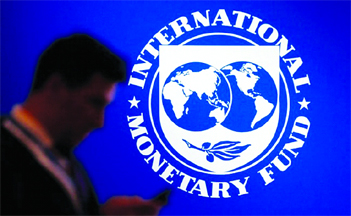The International Monetary Fund (IMF) has slashed its economic growth forecast for India by 20 basis points (bps) to 5.9 per cent for 2023-24 (FY24), citing lesser scope for pent-up demand due to historical revisions to data. This is the lowest growth forecast for India by any multilateral development bank, with the World Bank and the Asian Development Bank forecasting gross domestic product (GDP) growth at 6.3 per cent and 6.4 per cent respectively. In its latest bi-annual World Economic Outlook, the IMF projected India’s retail inflation to ease to 4.9 per cent in FY24 from 6.7 per cent in FY23, and the current account deficit to come down to 2.2 per cent of GDP from an estimated 2.6 per cent a year ago. In purchasing power parity terms, India’s growth in per capita output is set to decelerate to 4.9 per cent in FY24 from 5.8 per cent in FY23. Maintaining that India remains one of the bright spots in the global economy right now, Daniel Leigh, division chief, research department at the IMF, said the cut in India’s growth forecast was due to “a set of historical revisions”.
“We realised that 2020 and 2021 have actually been a lot better than we thought. So actually there is less room for catching up, and that pent-up demand from consumption, which was informing our previous forecast, is therefore going to be less because they have already had more catching up before,” Leigh said.
“That’s why there is the downward revision this year (FY24) and then we go up to 6.3 per cent next year (FY25) — again very strong economic growth, which is necessary to allow India to continue to converge towards higher living standards and create those jobs that are necessary,” he added.
In February, the National Statistical Office revised upward its growth estimates for FY21 and FY22 to -5.8 per cent and 9.1 per cent respectively from -6.6 per cent and 8.8 per cent estimated earlier, signifying that the Covid-19 pandemic had lesser debilitating impact on India’s economic growth trajectory.
The IMF has projected that global growth will bottom out at 2.8 per cent in 2023 — a tad lower than earlier estimate — before rising modestly to 3 per cent next year.
IMF Chief Economist Pierre-Olivier Gourinchas said while the global economy’s gradual recovery from both the pandemic and Russia’s invasion of Ukraine remained on track, the situation was fragile, highlighted by the recent banking instability. “China’s reopened economy is rebounding strongly. Supply chain disruptions are unwinding, while dislocations to energy and food markets caused by the war are receding,” he said.
However, Gourinchas said stronger-than-expected demand might require monetary policy to tighten further or to stay tighter for longer. “Monetary policy needs to stay focussed on price stability. If at this point, central banks were to pivot away from price stability, then there is a chance that the fight against inflation would not succeed. Inflation expectation would start rising, inflation would be even more persistent, that in itself is a source of macro-economic instability, that would feed even potentially further into financial instability as well. So we would not be gaining on any front,” he cautioned.
IMF cuts FY24 India growth forecast to 5.9% as global banking crisis weighs
